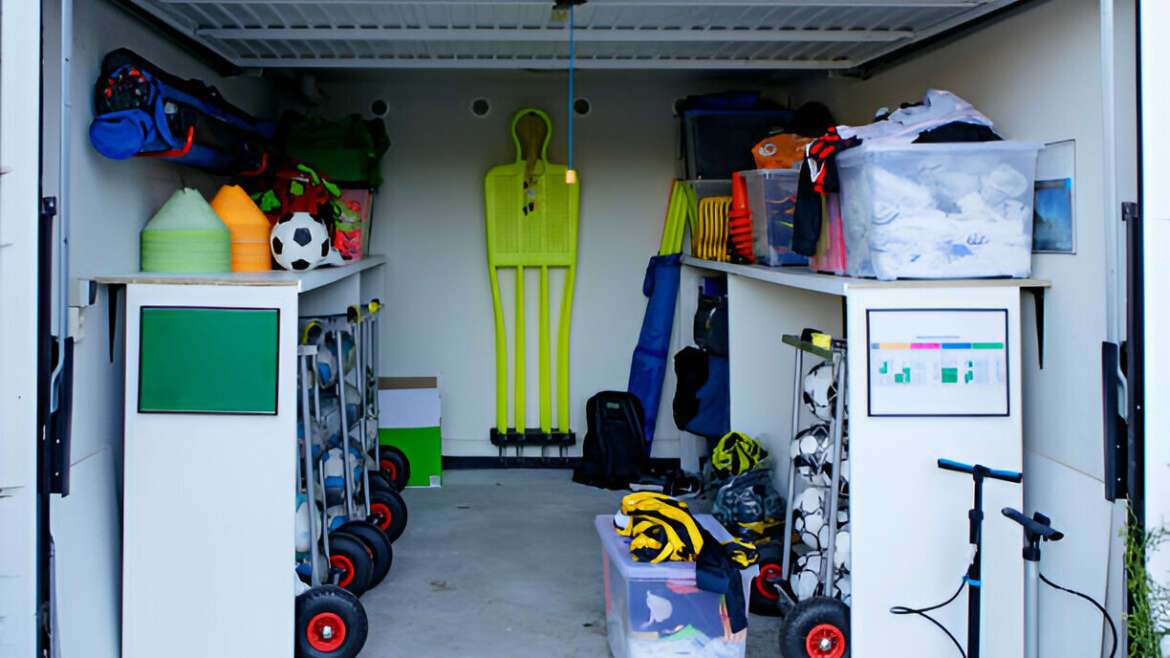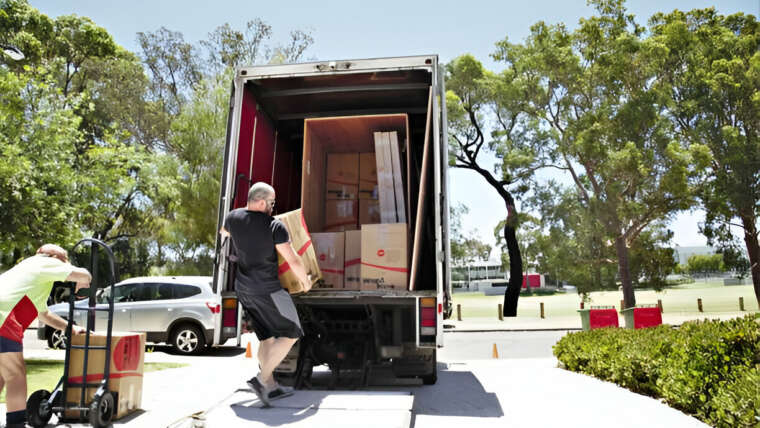Sports enthusiasts and athletes understand the vital role that proper equipment plays in performance and safety. Whether it’s a pair of well-maintained running shoes, a carefully strung tennis racket, or protective gear for contact sports, the condition of sports equipment can significantly impact an individual’s ability to excel and stay safe while engaging in physical activity. However, one aspect often overlooked is the importance of proper storage for sports equipment.
While many athletes and sports enthusiasts invest considerable time and resources into selecting the right equipment, the challenge often lies in ensuring that these valuable tools are stored correctly when not in use. From amateur enthusiasts to professional athletes, everyone faces hurdles when it comes to organising, storing, and maintaining their sports gear.
Overview of the Challenges
Space Constraints: One of the primary challenges is finding adequate space to store sports equipment, especially in households where space is limited. Whether it’s bulky items like bicycles or extensive collections of gear for various sports, the lack of storage space can lead to clutter and difficulty in locating specific items when needed.
Proper Ventilation: Sports equipment is susceptible to damage from moisture, and lack of ventilation. Improper storage conditions can result in mould, mildew, and deterioration of materials, compromising both performance and longevity.
Organisation and Accessibility: With a diverse range of equipment for different sports and activities, keeping everything organised and easily accessible can be a daunting task. Without a systematic approach to storage, individuals may find themselves wasting time searching for specific items or struggling to maintain order amidst the chaos of a cluttered storage space.
Hygiene and Cleanliness: Proper hygiene is essential not only for personal health but also for prolonging the lifespan of sports equipment. Failure to clean and maintain gear regularly can lead to the buildup of bacteria, odours, and stains, diminishing both performance and comfort.
Security and Protection: Valuable sports equipment, particularly high-end gear and specialised accessories, requires adequate security measures to prevent theft or damage. Without proper safeguards in place, individuals risk losing their investments to theft, vandalism, or accidental damage.
Storage Solution for your Sport Equipment in Wyong
How to Store Sport Equipment (5 Smart Tips)
1. Categorising Sports Equipment
One of the first steps in effectively managing sports equipment storage is to categorise items based on their type and frequency of use. By grouping similar items together, individuals can streamline the storage process and optimise space utilisation. For example, separating equipment by sport or activity—such as cycling, boating, or training—allows for easy identification and retrieval when needed. Additionally, considering the frequency of use can help prioritise storage space. Equipment used daily or regularly should be readily accessible, while items used infrequently can be stored in less accessible areas to free up prime storage real estate for frequently used gear.
Different types of sports equipment often have unique storage requirements to ensure their preservation and functionality over time. Identifying these specialised needs is essential for maintaining the integrity of the gear. For instance, certain items may require specific conditions such as temperature and humidity control to prevent damage from moisture or fluctuations in climate. High-value or delicate equipment, such as carbon fibre bicycles or precision instruments for measuring athletic performance, may require dedicated storage solutions to protect them from accidental damage or theft. Moreover, considering the size, shape, and weight of equipment is crucial when selecting appropriate storage solutions to prevent overcrowding and potential safety hazards.
2. Utilising Space Efficiently
Maximising vertical space is a key strategy for efficient sports equipment storage, especially in environments with limited floor space. Vertical storage solutions not only help declutter the area but also make it easier to access and organise equipment. Wall-mounted racks, shelves, and hooks provide excellent options for hanging items such as bicycles, surfboards, or ski equipment, keeping them off the floor and out of the way when not in use. Additionally, vertical storage solutions can be customised to accommodate different types and sizes of equipment, allowing for versatile and space-saving storage solutions in garages, sheds, or even inside living spaces.
In addition to maximising vertical space, utilising underutilised areas can significantly increase storage capacity and efficiency. Often overlooked spaces such as the area above doors, under staircases, or even the ceiling can be repurposed for storing sports equipment. Overhead storage racks, hanging organisers, or ceiling-mounted pulley systems offer innovative solutions for storing bulky or seasonal items like kayaks, paddleboards, or camping gear. Furthermore, incorporating storage containers, bins, or baskets under benches, tables, or furniture provides convenient storage options for smaller accessories, balls, and protective gear, effectively utilising otherwise wasted space.
3. Protective Measures
Regular cleaning and maintenance are essential to prolonging the lifespan and performance of sports equipment. Establishing a consistent cleaning routine helps prevent the buildup of dirt, sweat, and bacteria, which can degrade materials and cause odours. Depending on the type of equipment, cleaning methods may vary, but generally, wiping down surfaces with a mild detergent or disinfectant and allowing them to air dry is effective for most gear. Additionally, inspecting equipment for signs of wear and tear, such as frayed seams or loose components, allows for timely repairs or replacements, ensuring that gear remains safe and functional for use.
Investing in high-quality containers and covers is an integral part of protecting sports equipment from damage and deterioration. Sturdy containers, such as bins, crates, or lockable cabinets, offer secure storage options for organising smaller items and accessories, preventing them from getting lost or damaged. For larger equipment like bicycles, kayaks, or golf clubs, durable covers or cases provide protection against dust, moisture, and physical damage during storage and transport. Additionally, specialised covers designed for specific types of equipment, such as bike covers with UV protection or breathable fabric covers for athletic shoes, offer added protection against environmental factors and extend the lifespan of gear.
4. Organisational Systems
Implementing labelling and categorising systems is crucial for maintaining an organised sports equipment storage area. By clearly labelling storage containers, shelves, or sections of the storage space, individuals can quickly identify and locate specific items when needed. Utilising descriptive labels or colour-coding systems for different sports, activities, or family members simplifies the organisation process and minimises confusion. Additionally, categorising equipment based on factors such as size, function, or frequency of use further enhances efficiency and accessibility. For example, grouping similar items together, such as all golf equipment in one area and cycling gear in another, facilitates easy retrieval and ensures that everything has its designated place.
Establishing rotation schedules for seasonal equipment helps optimise storage space and ensures that gear remains in good condition throughout the year. By periodically rotating equipment based on seasonal use, individuals can keep frequently used items readily accessible while safely storing off-season gear out of the way. For instance, during the winter months, summer sports equipment like beach gear or camping supplies can be stored in a designated area, while winter sports gear takes precedence in accessible storage locations. Implementing a rotation schedule also provides an opportunity to inspect and maintain equipment before it’s put back into use, reducing the risk of damage or deterioration during storage periods.
5. DIY Storage Solutions
Repurposing household items creatively offers a cost-effective and environmentally friendly approach to sports equipment storage. Everyday items found around the house can be transformed into functional storage solutions with a bit of ingenuity. For example, using sturdy cardboard boxes or crates to create stackable storage units for smaller items like balls, gloves, or helmets is a simple yet effective solution. Similarly, repurposing old bookshelves, shoe racks, or hanging organisers can provide versatile storage options for sports gear, utilising existing furniture or accessories in new and innovative ways. By thinking outside the box and exploring creative alternatives, individuals can customise their storage solutions to fit their unique needs and preferences while minimising expenses.
For those with a knack for DIY projects and woodworking skills, building custom storage solutions offers endless possibilities for creating personalised and functional storage spaces. The options are limited only by one’s imagination and craftsmanship. Building custom storage solutions allows individuals to tailor the design, size, and features to accommodate specific types of equipment and storage needs. Whether it’s a dedicated bike rack with built-in hooks for helmets and accessories or a multi-tiered shelving system for organising a diverse range of gear, custom-built storage solutions provide a high level of customisation and flexibility.
Conclusion
Ensuring the longevity and functionality of sports equipment hinges on implementing smart storage practices and maintenance routines. Throughout this discussion, we’ve highlighted key strategies, from organising gear by type and frequency of use to utilising space efficiently and investing in protective measures. Regular inspections, upkeep, and timely repairs are crucial for preserving equipment, while DIY solutions and custom storage options offer creative and cost-effective alternatives. By incorporating these practices into daily routines, individuals can safeguard their gear, optimise space, and enhance accessibility. Let’s commit to implementing these smart storage practices to prolong the lifespan of our sports equipment and maximise our enjoyment of athletic pursuits.
If you’re seeking a reliable storage solution for your sports equipment in Wyong, Simply Storage Solution stands out as an excellent choice. Offering secure and accessible storage facilities, Simply Storage Solution provides peace of mind for athletes and enthusiasts alike. With their commitment to quality service and customisable storage options, you can trust them to safeguard your gear while optimising space efficiency. Whether you’re storing seasonal equipment or organising your athletic gear year-round, Simply Storage Solution offers a convenient and reliable solution tailored to your needs.


